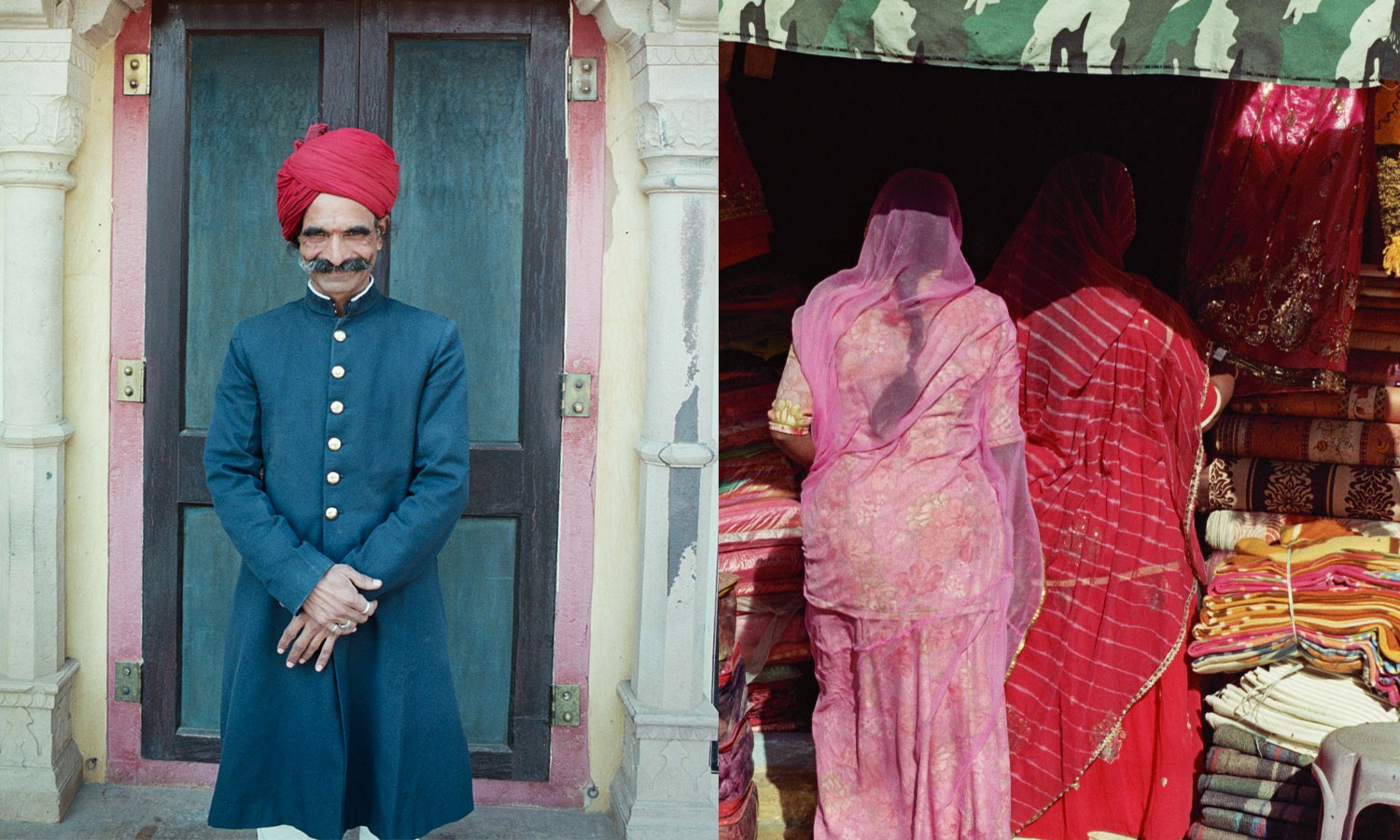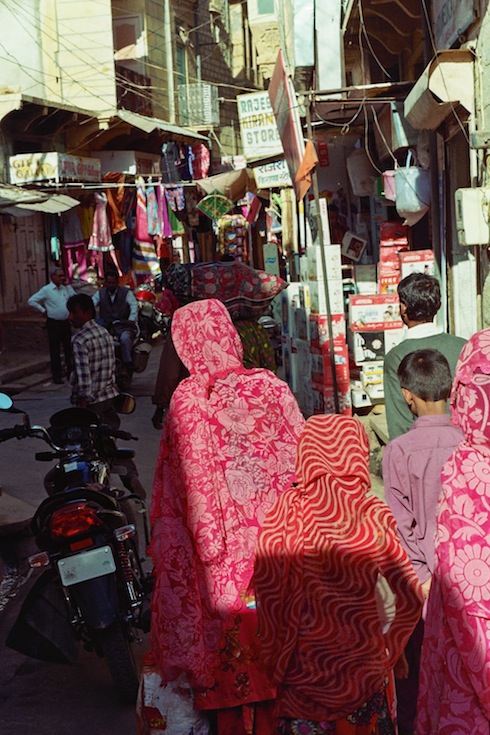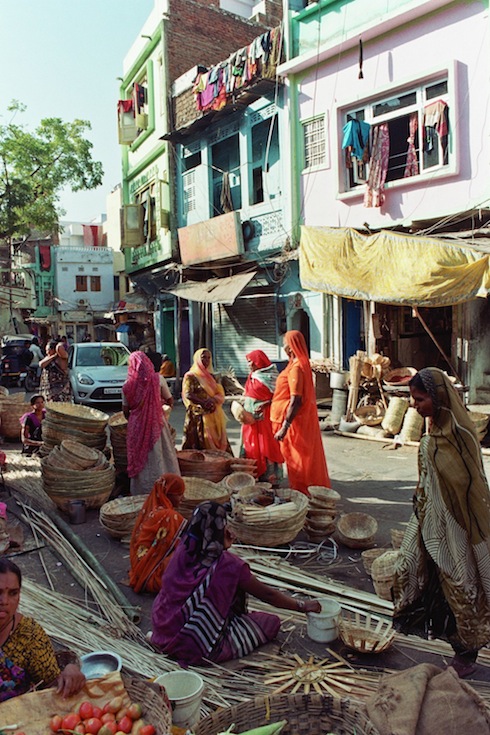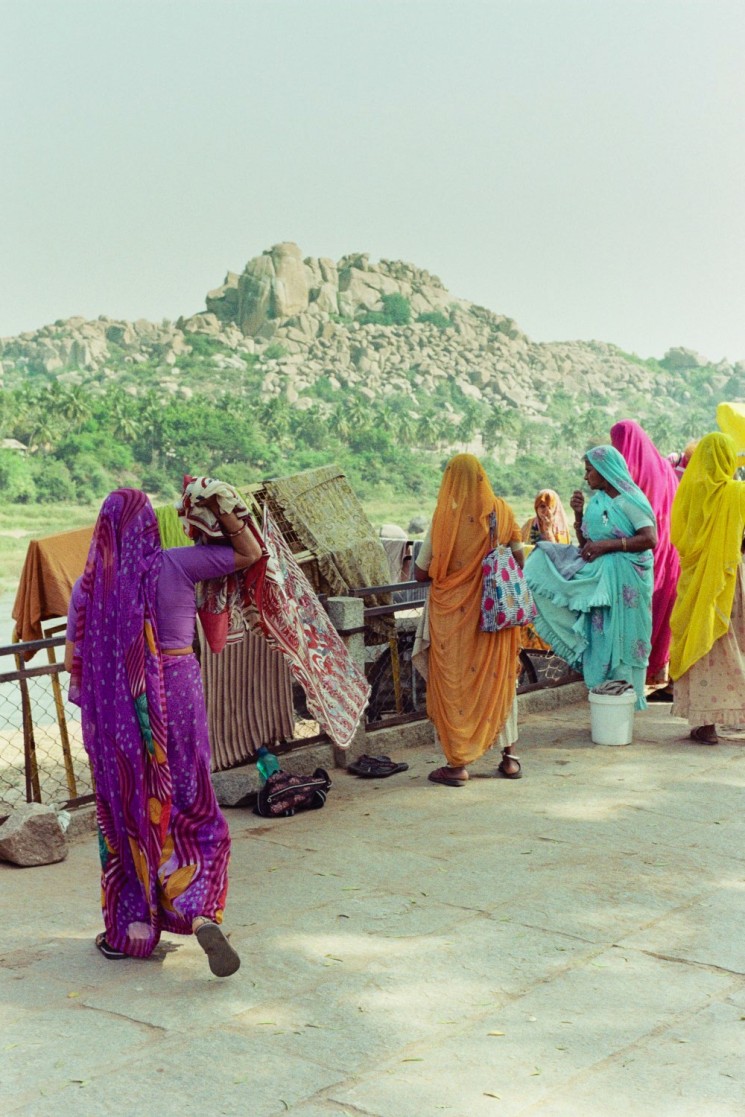
Beauty & the Basics
Indian Influences this Summer
Some recent fashion news to come out of India include that of the millionaire in Mumbai who had a shirt custom made of gold in order to get himself a girlfriend (he’s still single). For its ridiculous nature, the story received international attention, but the extravagance of the gold shirt eclipses all the natural beauty found in the people of India’s fashion habits.
The vast majority of clothing I came across during my time there was simple, a blend of tradition and accessible materials. The organic fabrics, most likely made by hand by the owner or a friend, are swathed in earthy neutrals and soft, cool colours. This is not a direct reflection of how they live their lives; the vibrant teas and spices stain their fingers and their worn hands are eager as they thrust brightly woven cloth under your nose. It was impossible to resist purchasing the colourful embroidered blankets, saris woven with gold threads, and piles upon piles of unique beads and jewelry.
It’s easy to identify the influence of Indian traditions in women’s fashion: Marchesa and Vera Wang both featured collections with heavy Southeast Asian influence, and that is to name only two of many. These trends are harder to identify in the mindset of men’s fashion – a state of mind many time singularly devoted to suits and semi- to formal wear. It is common for men in India to mimic and adopt Western styles of dressing and trends, but this summer, let’s opt to follow their lead with natural fabrics, bright colours, traditional cuts, beaded bracelets, and leather.
• • •
Natural fabrics
Environmentally friendly and sustainable threads have been growing in popularity and importance over the last few years. In a consumer quest for quality, both men and women are taking a greater interest in where and how their clothes are made. Major brands, like H&M, who just released their Conscious Collection, are jumping on to promote eco-friendly clothing. Plain cottons or silks dominate the men’s fashion market in India, a lesson in going back to basic that we can adopt here.
These natural materials will often take the form of a traditional Lungi, or sarong, paired with a more modern cut t-shirt or button-down in urban areas. The sherwani is also still a popular item and one most Westerners will be able to identify – a long jacket sporting exposed buttons that general hangs below the knee. Traditionally paired with tight fitting trousers, many men now wear them with jeans, mixing tradition with Western culture.


Colours
Few cultures know how to celebrate the way people in India do; festivals, weddings, births, even funerals, become a colourful celebration of life. Basic daytime wear is transformed for these occasions through bright dyes and rich embroidery.
Holi Festival, a Hindu festival celebrating colours and the arrival of spring, consists of tossing coloured and perfumed dust at others in a gesture of well wishes and good luck. Traditionally, the brightly coloured dusts are made by mixing natural spices and freshly bloomed flowers with paste, creating a natural pigmentation that dyes the skin and clothing. For summer, let these vibrant hues make their way into your wardrobe via a rainbow of tees and, for the daring, maybe even a statement trainer?
• • •
Beaded Jewelry
Some of my favourite gifts to bring back were beaded bracelets, a trend that almost every guy from the beaches of Goa to the port of Mumbai was sporting. Made by hand on the side of the road, the vendors featured strings of coloured, painted, carved beads and natural stones. Pick your beads and the estimated length and, using a sturdy fishing wire, metallic clasps, and an adorning coloured thread tassel, you’d have an order whipped up in no time.
• • •
Leather
A favourite part of any traveller’s trip to India is the dime-a-dozen shoe stores and cobblers that sell handmade leather sandals and slippers for a fraction of what you would pay in North America. Quality can vary depending on price and where shoes are bought, but it is not uncommon for a pair of shoes to be brought to a street cobbler over one’s lunch hour for a quick tune up of the strap that broke or the sole that has come unglued. These men’s fingers (I’ve yet to see a female shoe cobbler), are deft and strong and, using a thick needle, force small strips of leather or fishing wire through the shoe to repair any damage, often leaving it in better and a more stable condition than when they received it.
Loafers and smoking shoes are by no means taking a backseat to this toe-baring trend, but for those exceptionally hot days, let loose in a leather flip flop or one with a Birkenstock-style band across the foot.
• • •
Travel and experiencing other cultures is a key source of inspiration for fashion designers. But we do not need to design clothing professionally to be interested in how traditions of others can impact our wardrobe. When in doubt, or looking to shake things up, look way further than your own backyard. Look to other countries and other continents, to other materials and colours. We’re not saying ready your backpack and fly to India (although we would totally support that decision), but, this summer, do shake things up.

Some recent fashion news to come out of India include that of the millionaire in Mumbai who had a shirt custom made of gold in order to get himself a girlfriend (he’s still single). For its ridiculous nature, the story received international attention, but the extravagance of the gold shirt eclipses all the natural beauty found in the people of India’s fashion habits.
The vast majority of clothing I came across during my time there was simple, a blend of tradition and accessible materials. The organic fabrics, most likely made by hand by the owner or a friend, are swathed in earthy neutrals and soft, cool colours. This is not a direct reflection of how they live their lives; the vibrant teas and spices stain their fingers and their worn hands are eager as they thrust brightly woven cloth under your nose. It was impossible to resist purchasing the colourful embroidered blankets, saris woven with gold threads, and piles upon piles of unique beads and jewelry.
It’s easy to identify the influence of Indian traditions in women’s fashion: Marchesa and Vera Wang both featured collections with heavy Southeast Asian influence, and that is to name only two of many. These trends are harder to identify in the mindset of men’s fashion - a state of mind many time singularly devoted to suits and semi- to formal wear. It is common for men in India to mimic and adopt Western styles of dressing and trends, but this summer, let’s opt to follow their lead with natural fabrics, bright colours, traditional cuts, beaded bracelets, and leather.
• • •
Natural fabrics
Environmentally friendly and sustainable threads have been growing in popularity and importance over the last few years. In a consumer quest for quality, both men and women are taking a greater interest in where and how their clothes are made. Major brands, like H&M, who just released their Conscious Collection, are jumping on to promote eco-friendly clothing. Plain cottons or silks dominate the men’s fashion market in India, a lesson in going back to basic that we can adopt here.
These natural materials will often take the form of a traditional Lungi, or sarong, paired with a more modern cut t-shirt or button-down in urban areas. The sherwani is also still a popular item and one most Westerners will be able to identify - a long jacket sporting exposed buttons that general hangs below the knee. Traditionally paired with tight fitting trousers, many men now wear them with jeans, mixing tradition with Western culture.


Colours
Few cultures know how to celebrate the way people in India do; festivals, weddings, births, even funerals, become a colourful celebration of life. Basic daytime wear is transformed for these occasions through bright dyes and rich embroidery.
Holi Festival, a Hindu festival celebrating colours and the arrival of spring, consists of tossing coloured and perfumed dust at others in a gesture of well wishes and good luck. Traditionally, the brightly coloured dusts are made by mixing natural spices and freshly bloomed flowers with paste, creating a natural pigmentation that dyes the skin and clothing. For summer, let these vibrant hues make their way into your wardrobe via a rainbow of tees and, for the daring, maybe even a statement trainer?
• • •
Beaded Jewelry
Some of my favourite gifts to bring back were beaded bracelets, a trend that almost every guy from the beaches of Goa to the port of Mumbai was sporting. Made by hand on the side of the road, the vendors featured strings of coloured, painted, carved beads and natural stones. Pick your beads and the estimated length and, using a sturdy fishing wire, metallic clasps, and an adorning coloured thread tassel, you’d have an order whipped up in no time.
• • •
Leather
A favourite part of any traveller’s trip to India is the dime-a-dozen shoe stores and cobblers that sell handmade leather sandals and slippers for a fraction of what you would pay in North America. Quality can vary depending on price and where shoes are bought, but it is not uncommon for a pair of shoes to be brought to a street cobbler over one’s lunch hour for a quick tune up of the strap that broke or the sole that has come unglued. These men’s fingers (I’ve yet to see a female shoe cobbler), are deft and strong and, using a thick needle, force small strips of leather or fishing wire through the shoe to repair any damage, often leaving it in better and a more stable condition than when they received it.
Loafers and smoking shoes are by no means taking a backseat to this toe-baring trend, but for those exceptionally hot days, let loose in a leather flip flop or one with a Birkenstock-style band across the foot.
• • •
Travel and experiencing other cultures is a key source of inspiration for fashion designers. But we do not need to design clothing professionally to be interested in how traditions of others can impact our wardrobe. When in doubt, or looking to shake things up, look way further than your own backyard. Look to other countries and other continents, to other materials and colours. We’re not saying ready your backpack and fly to India (although we would totally support that decision), but, this summer, do shake things up.

